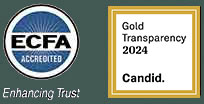Planting effective churches around the world requires church planters to hold two equally important things in tension. First, they have to be committed to the never-changing truth of the gospel and to proclaim it boldly. Second, they have to understand how to communicate the Gospel to an ever-changing culture. This task – contextualization – is the most critical work a church planter has to do.
In Acts, we see how the early church faced this challenge. After Pentecost, the church grew, but soon became comfortable. To shake them out of complacency, God used persecution to push believers into new regions, forcing them to preach the Gospel not just to Jews, but to Gentiles as well. This challenged them to reconsider how the message was to be preached to radically different cultures.
One of the clearest examples of contextualization comes when Paul asks Timothy to undergo circumcision in Acts 16. Timothy’s sacrifice removed a potential barrier to ministry among the Jews, illustrating how contextualization often requires personal sacrifice for the sake of others. Let’s all pray that you never have to go to those lengths to preach the gospel effectively in your city!
Contextualization isn’t just about understanding culture—it’s about being creative and bold in how we reach people. The Gospel must be presented in ways that overcome cultural and societal barriers. Whether it’s learning new languages, building relationships with people we don’t naturally associate with, or opening new ministry spaces, we are called to go beyond comfort zones to reach those who need Jesus.
Let’s commit to contextualizing the mission—because the world needs Jesus, and we’ve been sent to share His love in fresh and creative ways.




